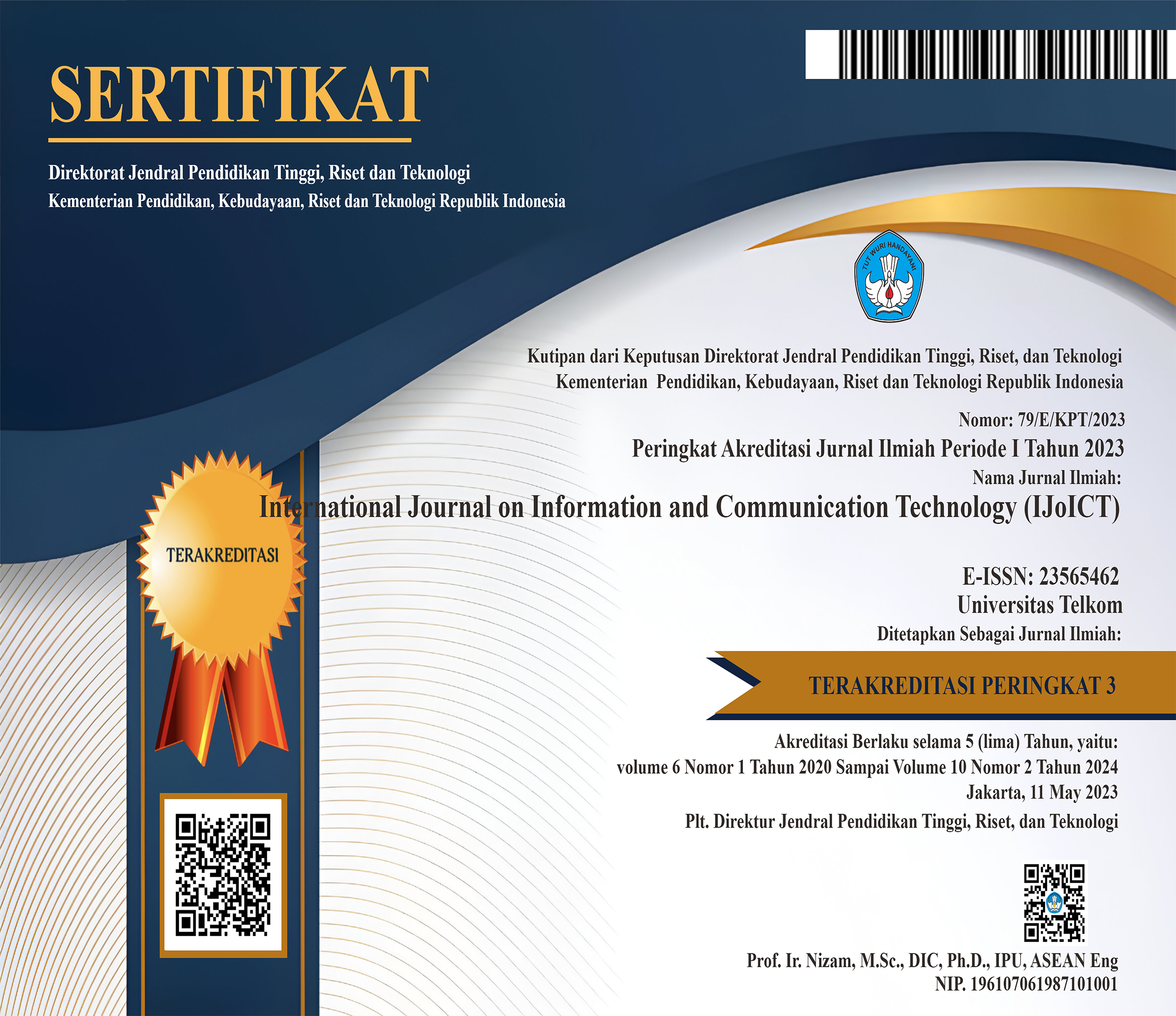Safety Requirements Analysis using Misuse Cases Method
 Abstract views: 285
,
Abstract views: 285
,
 pdf downloads: 226
pdf downloads: 226
Abstract
Safety requirements analysis is an activity inside software requirements engineering that focuses on finding and solving safety gaps inside a software product. One method to do safety requirements analysis is misuse cases, a technique adopted from the security analysis method. Misuse cases provide a safety analysis approach which allows detailed steps from different stakeholders' perspective. In this research, we evaluate the misuse cases method's understandability by implementing it to analyze safety requirements for an electric car's autopilot system. We assessed the developed models using the walkthrough method. We found differences between how the model understood from someone with experience in software development and those who don't.
Downloads
References
[2] T. Stålhane and G. Sindre, "Safety hazard identification by misuse cases: Experimental comparison of text and diagrams," in Lecture Notes in Computer Science (including subseries Lecture Notes in Artificial Intelligence and Lecture Notes in Bioinformatics), 2008, vol. 5301 LNCS, pp. 721–735, doi: 10.1007/978-3-540-87875-9_50.
[3] I. Alexander, "Misuse cases help to elicit non-functional requirements," Computing and Control Engineering Journal, vol. 14, no. 1, pp. 40–45, 2003, doi: 10.1049/cce:20030108.
[4] J. O. Grady, System Requirements Analysis: Second Edition. 2014.
[5] K. Allenby and T. Kelly, "Deriving safety requirements using scenarios," in Proceedings of the IEEE International Conference on Requirements Engineering, 2001, pp. 228–235, doi: 10.1109/isre.2001.948563.
[6] G. Sindre, "A look at misuse cases for safety concerns," in IFIP International Federation for Information Processing, 2007, vol. 244, pp. 252–266, doi: 10.1007/978-0-387-73947-2_20.
[7] M. Damodaran, "SECURE SOFTWARE DEVELOPMENT USING USE CASES AND MISUSE CASES," Issues in Information Systems, vol. 7, no. 1, pp. 150–154, 2006, doi: 10.48009/1_iis_2006_150-154.
[8] G. Sindre and A. L. Opdahl, "Eliciting security requirements with misuse cases," Requirements Engineering, vol. 10, no. 1, pp. 34–44, 2005, doi: 10.1007/s00766-004-0194-4.
[9] National Highway Traffic Safety Administration, "Traffic Safety Facts Annual Report, 6/30/2020," Www-Nrd.Nhtsa.Dot.Gov, no. May, p. Volume: 2001, Issue: June, Pages: 232, 2014, Accessed: Dec. 27, 2020. [Online]. Available: https://cdan.nhtsa.gov/tsftables/National Statistics.pdf.
[10] Tesla, "Tesla Vehicle Safety Report," Tesla Vehicle Safety Report, 2020. https://www.tesla.com/VehicleSafetyReport (accessed Dec. 27, 2020).
[11] "ISO 25010." https://iso25000.com/index.php/en/iso-25000-standards/iso-25010?limit=3&limitstart=0 (accessed Dec. 30, 2020).
[12] P. G. Polson, C. Lewis, J. Rieman, and C. Wharton, "Cognitive walkthroughs: a method for theory-based evaluation of user interfaces," International Journal of Man-Machine Studies, vol. 36, no. 5, pp. 741–773, 1992, doi: 10.1016/0020-7373(92)90039-N.
[13] P. A. Zielinski, "Concept of safety and safety requirements for dams," in Dams and Reservoirs under Changing Challenges - Proceedings of the International Symposium on Dams and Reservoirs under Changing Challenges - 79 Annual Meeting of ICOLD, Swiss Committee on Dams, Jun. 2011, pp. 153–162, doi: 10.1201/b11669-22.
[14] D. G. Firesmith, "Engineering safety-related requirements for software-intensive systems," in Proceedings. 27th International Conference on Software Engineering, 2005. ICSE 2005., Jun. 2005, pp. 720–721, doi: 10.1109/ICSE.2005.1553680.
[15] D. Seifert, "Model-based Refactoring for Component Fault Trees," Accessed: Dec. 27, 2020. [Online]. Available: https://www.researchgate.net/publication/341121052_Model-based_Refactoring_for_Component_Fault_Trees.
[16] Silvianita, M. F. Khamidi, I. Rochani, and D. M. Chamelia, "Hazard and Operability Analysis (HAZOP) of Mobile Mooring System," Procedia Earth and Planetary Science, vol. 14, pp. 208–212, Jan. 2015, doi: 10.1016/j.proeps.2015.07.103.
[17] G. Sindre and A. Opdahl, "Capturing security requirements through misuse cases," NIK 2001, Norsk Informatikkonferanse 2001, p. 12, 2001, Accessed: Dec. 27, 2020. [Online].
[18] S. Caroline, "What is strenuous? Driving itself or the driving situation?," Jan. 2006, Accessed: Dec. 27, 2020. [Online]. Available: https://www.researchgate.net/publication/225018978_What_is_strenuous_Driving_itself_or_the_driving_situation.
[19] M. Werling, T. Gindele, D. Jagszent, and L. Gröll, "A robust algorithm for handling moving traffic in urban scenarios," in IEEE Intelligent Vehicles Symposium, Proceedings, 2008, pp. 1108–1112, doi: 10.1109/IVS.2008.4621260.
[20] T. A. Kurniawan, “Pemodelan Use Case (UML): Evaluasi Terhadap beberapa Kesalahan dalam Praktik,†Jurnal Teknologi Informasi dan Ilmu Komputer, vol. 5, no. 1, p. 77, 2018, doi: 10.25126/jtiik.201851610.

This work is licensed under a Creative Commons Attribution 4.0 International License.
Manuscript submitted to IJoICT has to be an original work of the author(s), contains no element of plagiarism, and has never been published or is not being considered for publication in other journals. Author(s) shall agree to assign all copyright of published article to IJoICT. Requests related to future re-use and re-publication of major or substantial parts of the article must be consulted with the editors of IJoICT.









.png)

.jpg)




